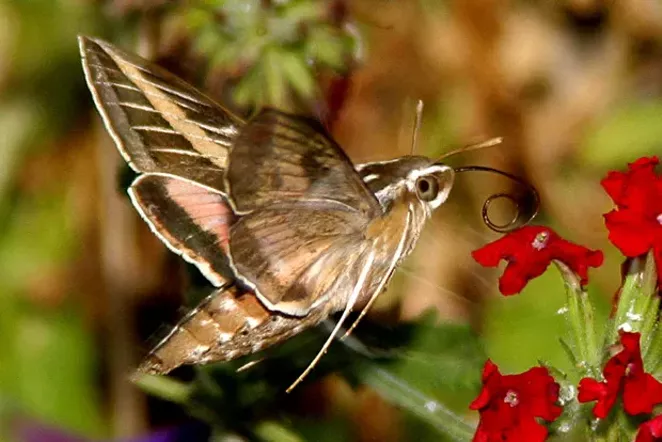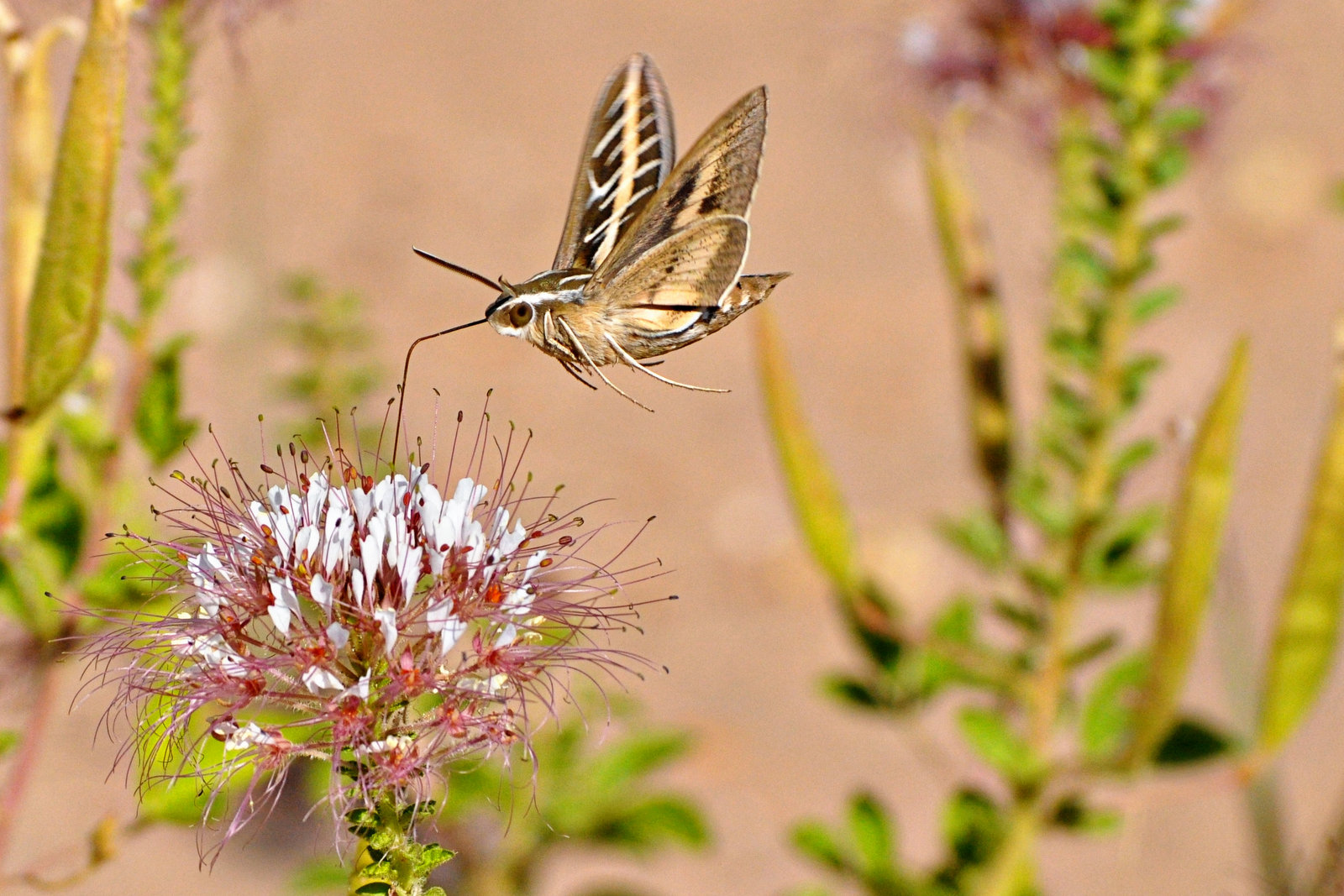

Occasional dark forms of the tomato hornworm larvae occur.
#Moth that looks like a hummingbird series
These form a series of V’s with tomato hornworms, while there are diagonal dashes on the tobacco hornworm.

The caterpillars also are differentiated by the white striping along their sides. The tomato hornworm has a dark green “horn” with black sides, while that of the tobacco hornworm is red. The tobacco hornworm is usually much more common in regional vegetable gardens than the tomato hornworm, but both may be found together as they generally have similar habits. Tomatoes are particularly susceptible to injury but other related plants, such as peppers and potatoes, are occasionally infested. The caterpillars chew leaves, and plants can be rapidly defoliated. Both species are pests in vegetable gardens. This is a complex of two species, the tomato hornworn ( Manduca quinquemaculata), and the tobacco hornworm ( Manduca sexta). The most familiar hornworms are those associated with tomatoes and related plants. Apparently there is one generation produced per year, with full-grown caterpillars being observed in late August and early September. The caterpillars develop on Virginia creeper, grape, and related vines and are dark brown with purplish tones. Instead subsequent larval stages are marked by having a prominent “eyespot” marking at the hind end. Larvae of the achemon sphinx ( Eumorpha achemon) are unusual in that they lose the terminal “horn” after the first molt. Both species develop on aspen, cottonwood, poplar, and willow, but they are never abundant enough to cause injury to the tree. Caterpillars are generally green with light striping. The largest common sphinx moth in Colorado is the big poplar sphinx ( Pachysphinx occidentalis) a closely related species, the modest sphinx ( Pachysphinx modesta), can be found in higher elevations. Adults have a prominent white band on the upper forewing. Less commonly you’ll find predominately black forms, with yellow markings. Most are predominately green, with some yellow, white, and/or black markings. Hornworms of the whitelined sphinx can vary in color. Rarely, you may see large outbreaks of caterpillars that sometimes result in very visible migrations across roadways when food plants are exhausted. Portulaca, primrose, and wild grape are among the most common larval hosts. Larvae develop on a variety of plants but seldom do they significantly damage those plants considered economically important. The whitelined sphinx ( Hyles lineata) is the most common hornworm of Colorado and, by far, the most commonly encountered “hummingbird moth”. It’s available at: Life History and Habits Whitelined Sphinx ( Butterflies and Moths of North America, a Web site maintained by the USGS Northern Prairie Wildlife Research Center, documents the known distribution of various moths, including sphinx moths. Adults of most hornworms (including the “tomato” hornworms) fly after dusk and are rarely observed except occasionally at porch lights. The great ash and twinspot sphinx are two other species commonly observed in “hummingbird moth” behavior.

The whitelined sphinx is the species most commonly observed in this habit and is usually most active during late afternoon and dusk. These moths have a superficial resemblance to hummingbirds in flight while they similarly feed from deep-lobed flowers. However, some local species are popularly known as “hummingbird moths”. Pupae are typically brown, two inches or more in length, and many have a pronounced “snout” off the head end.Īdult stages of hornworms are heavy-bodied, strong flying insects known as sphinx or hawk moths. Pupation occurs a few inches below the soil surface in a small chamber of packed earth. Although these two insects are considered garden pests, the majority of the more than 30 hornworm species found in Colorado are rarely observed and do not cause significant injury to plants.įull-grown hornworm larvae migrate from their host plant and dig in loose soil where they pupate. The most widely recognized hornworms are those that feed on tomatoes – the tomato hornworm and the tobacco hornworm. Characteristically they sport a flexible spine (“horn”) on the hind end, although in some species this is lost and replaced with an eyespot marking. Hornworms are among the largest of all caterpillars found in Colorado, some reaching lengths of three inches or more. Whitelined sphinx, a common “hummingbird” moth. Adult stages of hornworms are known as sphinx, hawk, or “hummingbird” moths.Although the “tomato hornworm” damages garden plants, most hornworm species cause insignificant plant injury.Hornworms are among the largest caterpillars found in Colorado.


 0 kommentar(er)
0 kommentar(er)
